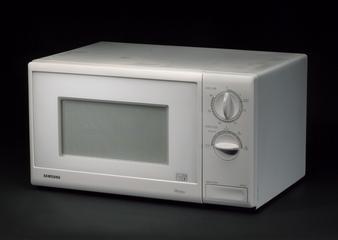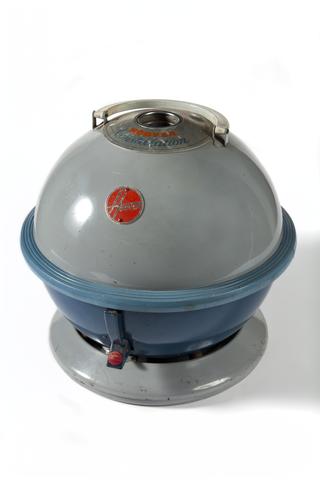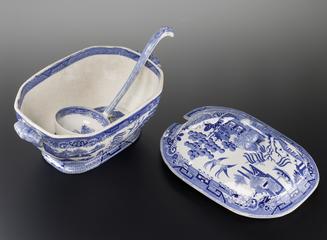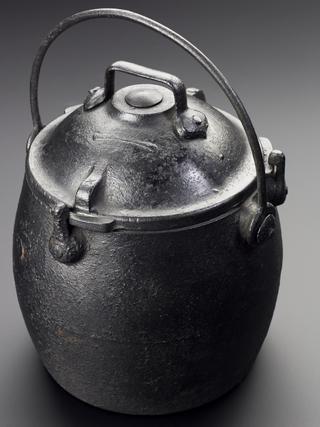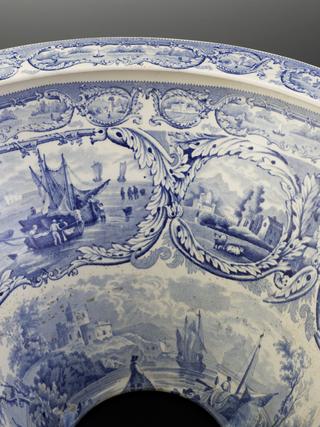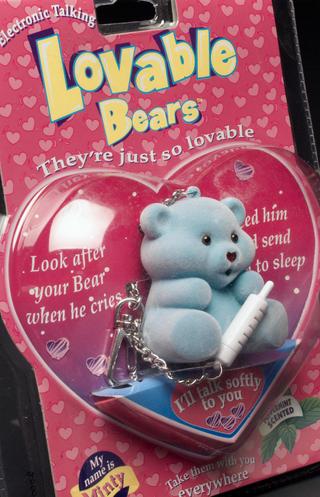
Duomatic twin tub washing machine.
- Made:
- 1963 in Netherlands
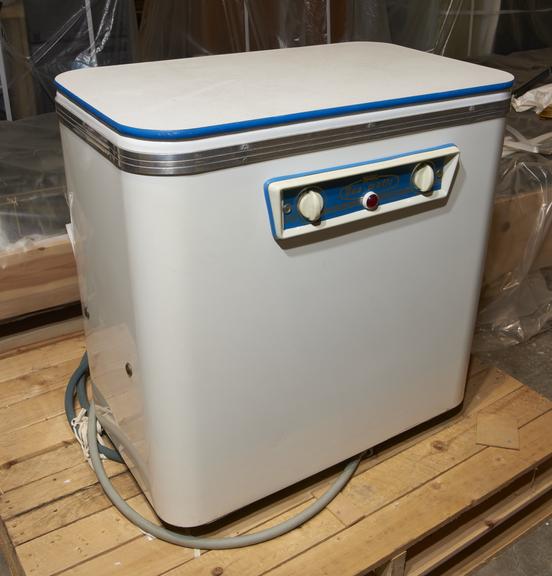
Duomatic twin tub washing machine, jug, hose and instruction manual with invoice and other paper ephemera, 1963.
Household washing machines were uncommon in Britain until after the Second World War and most people would have washed their clothes by hand: soaking them, stirring them, scrubbing them, and squeezing water out of the wet clothes with a mangle. It was long and tiring work, mostly done by women, for whom washday was a weekly task.
From the 1950s twin tub washing machines became a popular appliance Britain, promising to make doing the laundry quicker and easier. One tub was for washing clothes, the other was for spin drying. Although it made washing easier, the user still had to move the wet clothes from the washing tub to the spinning tub by hand. On some models they even had to fill and empty the water too. This particular machine was sold by Duomatic, but probably made in Holland.
In the late 1950s British entrepreneurs, such as the Electromatic company, started to import cheap washing machines from Holland to sell door-to-door and through newspaper adverts. By selling washers directly to customers from the factory, without the expense of running shops, they undercut the prices of high-street retailers. It was a profitable business, but in 1960 a group of Electromatic staff split to launch a rival washing machine company: Duomatic, who imported washing machines from the same factories in Holland. Duomatic machines were priced at 52 Guineas in 1960, cheaper than most other models, though many would have been paid for in instalments on hire-purchase.
After their initial success, twin tubs were overtaken in popularity by “fully automatic” washing machines with one tub, which filled the water, washed, spun, and drained automatically. Duomatic did not survive the change in the market and folded in about 1964.
Details
- Category:
- Domestic Appliances
- Object Number:
- Y2009.61
- Materials:
- metal (unknown) and plastic (unidentified)
- type:
- washing machine
